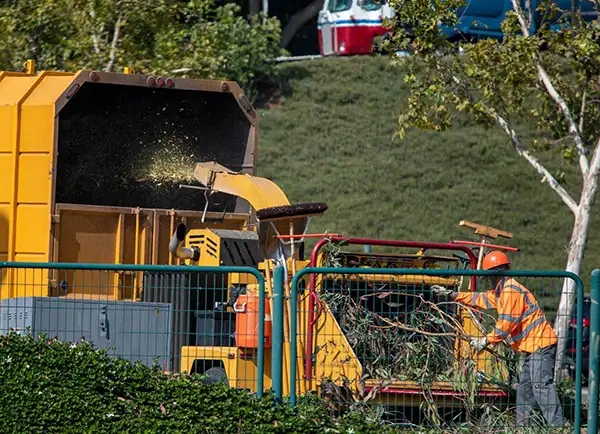When considering the best time of year to cut trees, it’s important to understand the growth cycles of different species.
Late winter to early spring is often recommended, but there are nuances to this that you might not be aware of.
Factors like tree type and health play a crucial role. Curious about how to determine the right timing for your specific trees? Let’s explore this further.
Understanding Tree Species and Their Growth Cycles
Knowing your trees’ growth patterns is key to maintaining a healthy landscape.
Deciduous Trees
These trees shed leaves in autumn and go dormant in winter.
- Best Time to Prune: Late winter or early spring before new growth starts.
- Dormant Season Maintenance: Reduces stress and promotes healthy regrowth.
- Trimming Benefits: Enhances shape and removes damaged branches efficiently.
Evergreen Trees
These trees retain their foliage year-round but have specific growth phases.
- Best Time to Prune: Late winter or early spring for optimal results.
- Controlled Pruning: Helps manage shape and encourages balanced growth.
- Avoid Excessive Cutting: Over-pruning can weaken evergreens.
Species-Specific Considerations
Some trees require special care to thrive.
- Flowering Trees: Trim after blooming to preserve flower production.
- Fruit Trees: Prune during dormancy for better fruit yield.
- Fast-Growing Species: Require more frequent trimming to prevent overgrowth.
By understanding each tree’s growth cycle, you can make informed pruning decisions that improve tree health and maintain your landscape’s beauty.
Seasonal Considerations for Tree Trimming
Timing your tree trimming correctly can improve both tree health and landscape appearance.
Winter (Late Winter to Early Spring)
This is the best time for most trees due to their dormant state.
- Benefits: Reduces stress and encourages vigorous spring growth.
- Ideal for Deciduous Trees: Promotes strong regrowth before leaves emerge.
- Minimizes Disease Risk: Fewer pests are active during colder months.
Spring and Summer
Trimming during warmer months can be beneficial but requires careful timing.
- Spring Pruning: Ideal for shaping fast-growing trees.
- Summer Maintenance: Best for light trimming or removing damaged branches.
- Caution: Over-pruning in summer may weaken trees.
Fall
Generally, fall is the least ideal time for trimming.
- Risk of Infection: Fresh cuts may attract pests or disease.
- Weakened Trees: Trees may struggle to heal before winter.
- Exception: Emergency pruning may be necessary for safety.
By aligning your trimming schedule with seasonal growth cycles, you’ll promote healthier trees and a thriving landscape.
Signs That Indicate It’s Time to Cut Trees
Knowing when to cut a tree is essential for maintaining safety and protecting your property.
Visible Signs of Damage or Decay
Check for physical signs that suggest a tree is in decline.
- Dead or Brittle Branches: Limbs that snap easily pose a falling hazard.
- Fungal Growth: Mushrooms or decay at the base signal internal damage.
- Peeling Bark: A sign the tree may be struggling to survive.
Structural Instability
Trees showing signs of instability may require immediate attention.
- Leaning Trees: A sudden tilt could indicate root damage.
- Damaged or Exposed Roots: Weak roots reduce stability and nutrient intake.
- Sparse Leaves: Poor foliage during the growing season suggests poor health.
Safety Concerns
Certain tree conditions pose risks to your home and surroundings.
- Branches Near Power Lines: Increases the risk of outages and fire hazards.
- Overgrown Trees: May damage roofs, fences, or sidewalks.
If you notice any of these warning signs, consulting a professional can help you decide the best course of action for your trees and property.
Knowing the ideal time to trim trees helps encourage healthy growth, enhance your landscape, and improve property safety.
While late winter to early spring is best for most species, it’s equally important to watch for signs of damage or disease year-round.
Regular inspections and timely trimming reduce risks, and for complex issues, professional advice can ensure your trees remain strong and secure.

